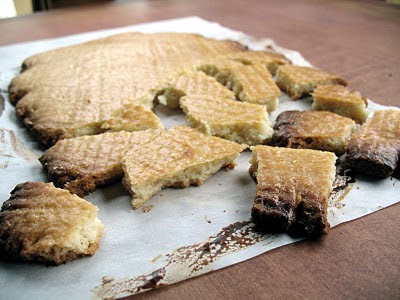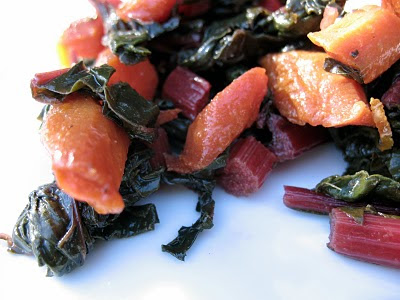
I have an inability to connect the dots that's almost masterful sometimes. Take for instance these blue cheese savories. I test drove this recipe earlier in the week, after lusting over it since Food52's post a month ago. And it did not disappoint -- these are amazing. Truly. The cookie itself is salty and savory, piquant with blue cheese, and counterbalanced with a dollop of tart jam. And, as an added bonus, it has a delightfully short and flaky crumb (and is easy to make, with just a handful of ingredients). It's like the most elegant Cheez-It ever, the best of a cheese plate (cracker, cheese and preserves) all in one tiny little mouthful. This is a recipe that practically screams "I am your New Year's Eve party appetizer!" I sent messages to everyone I know telling them to make this cookie. And yet, I still managed to putter around my keyboard the past day or so, wondering whatever should I write about this week. Sigh. See what happens when I forget to take photos? Out of sight, out of.... Sorry, what were we talking about?
Although 2010 draws to a close tonight, hopefully some of you are laggards like me, and are still mulling over what to bring to your New Year's parties. And if these don't get made tonight, put them on your list for 2011.

Blue Cheese and Jam Savories
from The Runaway Spoon, via Food52
yields ~4 dozen cookies
The initial recipe called for fig jam, but I've now made this with three types of jam, and all were delicious. I'd recommend something on the slightly less sweet side, such as fig, apricot or pear. Also don't worry that the recipe doesn't call for salt -- the salt in the cheese will be enough.
1 cup flour, plus additional for rolling
1 stick (1/2 cup) butter, softened to room temperature, and cut into a few chunks
4 oz crumbled blue cheese (this was a scant cup for me, but the volume may vary)
ground pepper
~1/4 cup jam
Place the flour, butter, and blue cheese in a food processor, and top with a few grinds of black pepper. Pulse a few times, until both the butter and cheese are reduced to small bits. Do not over-process. Turn the dough out onto a bowl, and squeeze and fold it until it comes together (alternately, you can continue to process the dough in the processor until it comes together, then just turn it over a few times on the counter to finish the process, but I like to prevent over-processing and ensure flakiness with the other method). If you have a particularly moist blue cheese, you may need extra flour (I was working with a particularly dry cheese). Cover with plastic wrap or waxed paper, and chill it for half an hour (this step is optional, but I think it makes the dough nicer to work with).
Preheat your oven to 350 degrees.
Let the dough warm up a few minutes if chilled, and roll out on your floured countertop to a thickness somewhere between 1/8"-1/4". Cut out circles with a 2" cutter (you can use a smaller one if you favor wee savories, which will yield more cookies). Place the rounds on a cookie sheet (they'll spread a bit, but not too much -- more if the dough is warm). Make a small divot in the center, with your finger or the back of a measuring spoon or whatever you like. Fill the divots with ~1/4 tsp jam (I think I used more), and bake the cookies until the jam is bubbling and the cookies are just beginning to color, ~10 minutes. Let cool on the sheet for a few minutes, then move to a rack (or your mouth).







































